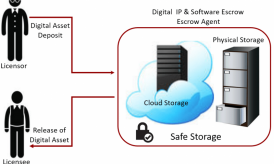There are so many terms in relation to the transmission of information on the internet, it can get very confusing. In reality, there are only a few that you need to know. With a little knowledge you won’t be contacting your computer network support as much.

At the same time, if you are running a small business, or even just want internet access all the time at home, it will pay to have a computer support service that can give you 24/7 support. Make sure you know their phone number, because you won’t be able to get it from their website. Here is a look at the main communication protocols on the internet you should know, and some other associated terms. You might not need computer repairs to fix your connection problems after all.
TCP/IP.
The Transmission Control Protocol/Internet Protocol is the main way all computers connect to the internet. It was developed back when the internet was just starting, and it is the basis of all other protocols and connecting to the internet. It is essentially the address of every computer and website if it is connected to the internet. The IP (Internet Protocol) address is the internet address of your connection on the internet.
WLAN and LAN.
A WLAN (Wireless Local Area Network) is exactly the same as a LAN (Local Area Network), except it is created through your wireless devices. All devices on the local area network will have a slightly different IP address. This is so they can be identified separately, and this will normally be configured automatically. Make sure your WLAN password is WPA (Wifi Protected Access) because this is the latest in protection against hacking your Wifi connection, and using your internet access.
MAC Address.
This has nothing to do with Apple computers. Every computer on a network has a unique identifier when it is on a network. The Mac Address normally encodes in the manufacturer’s registered identification number. It is so an individual machine can be identified on the internet if necessary.
SSL and TLS.
Secure Socket Layer is commonly used in many communication applications, particularly VOIP. It is so you know what you are really dealing with on the other end of an application. This could even mean verification of a site before the page downloads. Transport Layer Security is one step beyond this and integrates SSL between HTTP (Hyper Text Transfer Protocol) and HTTPS (Hyper Text Transfer Protocol with Secure Socket Layer) and TCP. You want this as a minimum of any of your communications today. When you go to a website ‘xxxx’, for example, type in, ‘https://xxxx.com’, instead of ‘http://xxxx.com, and you will be using a layer of security so the information you are sending or receiving is encrypted.
Emulation.
The above are the most common, and minimum-security measures that should employ when getting on the internet. There are many other ways to share and communicate. Terminal emulators are by far the most complex. For example, Windows terminal emulator looks like a normal application on Windows, but acts like an old piece of hardware for mainframes still in use by big corporations such as banks and governments. These applications look smooth and fast to use because they do many tasks at once, may appear to the mainframe as many devices, and are often communicating pre-preemptively. If you are using Apple, you will need an Apple terminal emulator, and that has nothing to do with the many different terminals that must be emulated to communicate with the mish-mash of communication protocols used in the 70s. If you are using terminal emulators, you are going to need serious network support. This one is very common, but a job for the total computer IT geek.
If you start to explore the options for communication and file transfer, you might find it very interesting and get a lot more out of your internet time.
















Thanks for explaining these terms, I have to say I was only aware of TCP/IP
I was aware for all these terms except TLS n Emulation………BTW thanks enlighten us
Thanks for explaning these terms, I am new to some of the protocols.
I have read about all these technical terms in my diploma course PGDCA. Thanks for recalling and explaining these terms in a very elaborate manner.
There really isn’t anything to HTTP but HTTPS does require a certificate. As a user, you go and verify their certificate by sending information using a public key. They use their private key to decrypt it. This way it ensures any information transmitted cannot be intercepted and read by a third party.